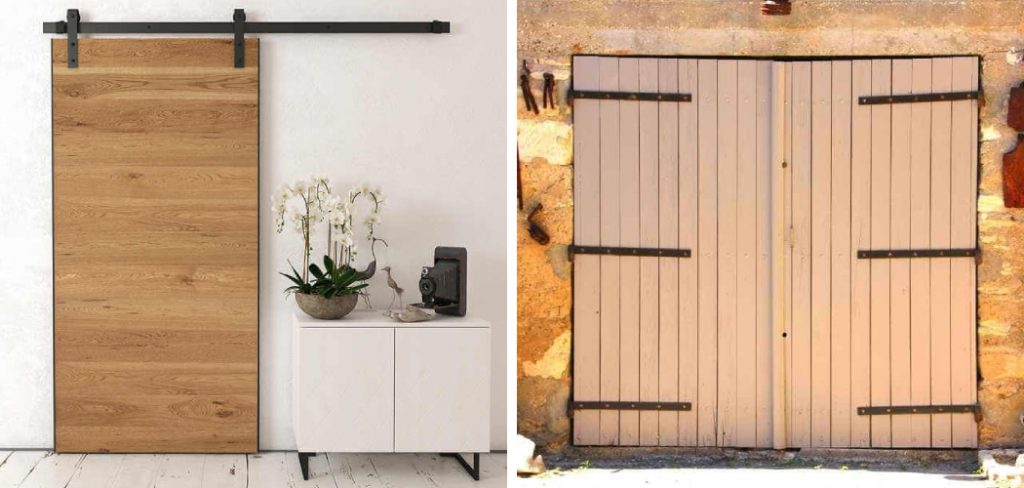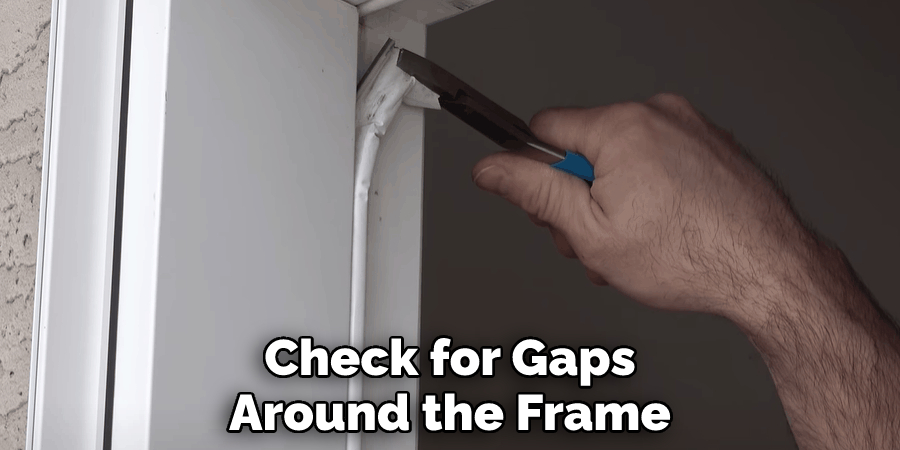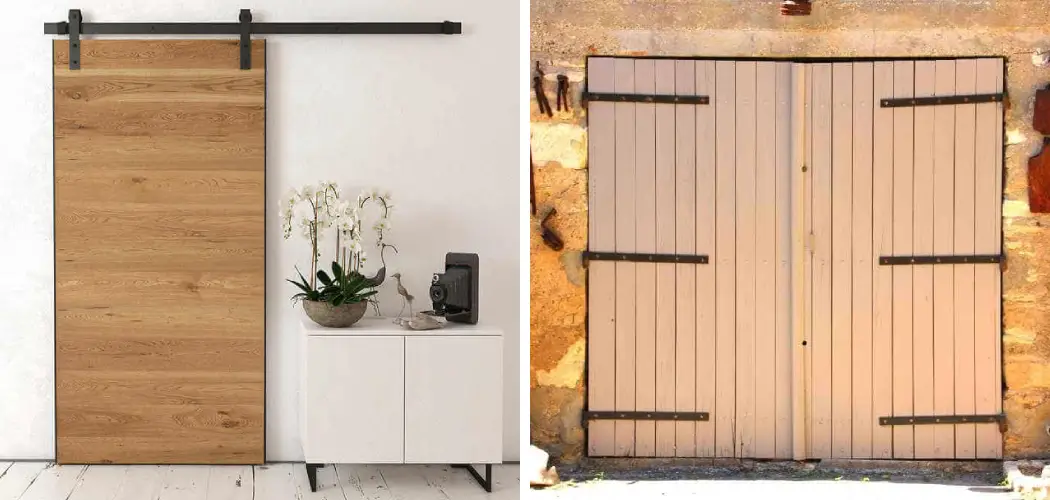Soundproofing your barn door is essential if you have a lot of noise coming into or out of the space, such as from traffic outside, loud music, animals, and more. Not only can it help keep sounds in or out to some degree, but it can also help reduce echoing and reverberation in the area. This makes for a much more comfortable environment, both aesthetically and audibly.

Soundproofing a barn door can provide many benefits, from reducing noise pollution to providing a more comfortable environment. Soundproofing your barn door can help keep out loud noises from the outside world and create an atmosphere of peace and quiet within. It can also reduce energy costs by helping to insulate the area and block out cold drafts. Soundproofing can also help improve the appearance of your barn door and is easy to do. In this blog post, we will cover the basics of how to soundproof a barn door so that you can pick the best option.
Materials You Will Need
- Soundproofing materials like foam panels, rubber mats, heavy blankets or curtains
- Acoustic caulk and sealant
- Soundproofing tape
- Adhesive spray glue
- Construction adhesive for applying the soundproofing material to the door
- Screws and anchors, if needed
- Electric drill and bits for the screws
- Level and ruler for measuring
- Utility knife for cutting soundproofing material
- Hammer for applying sealant strips or mounting anchors
Step-by-step Instructions for How to Soundproof a Barn Door
Step 1: Inspect the Barn Door
Take a look at the door and identify any weak spots or potential noise sources. Check for gaps around the frame, between panels, and in the door jambs. Use acoustic caulk to fill any gap that is larger than 1/8 of an inch wide. You may also use weatherstripping or acoustic foam to seal the gaps.

Step 2: Add Insulation to the Door
Insulate your barn door with fiberglass, mineral wool, or polyester batting. Choose materials that are fire-resistant and won’t absorb moisture. Measure the door and cut pieces of insulation to size. Place them between the wood panels, using construction adhesive to hold them in place.
Step 3: Hang Acoustic Curtains
Acoustic curtains are a great way to soundproof your barn door. They reduce the amount of noise that can pass through the gaps in the door and help create a more comfortable atmosphere. Choose heavy-duty curtains that feature multiple layers of fabric and insulation. You can use curtain rods or other methods to hang the curtains if needed.
Step 4: Install Soundproof Seals
For even more sound protection, you can install soundproof seals around the frame of your barn door. These seals are made from rubber, foam, and vinyl materials that absorb sound waves and keep noise from entering or exiting the barn. Measure the door, cut the seals to size, and use adhesive to attach them to the frame.
Step 5: Seal Gaps Around Thresholds
Lastly, look for any gaps around thresholds or other openings that lead into your barn. These are especially dangerous spots for noise leakage as their areas where air can easily pass through. To seal these gaps, use acoustic caulk or weatherstripping to fill them in and prevent sound from getting through.

By following these steps, you can easily soundproof your barn door and enjoy a quieter atmosphere in the barn. Keep in mind that the more layers of noise-blocking materials you have, the better results you’ll get in terms of soundproofing.
Safety Tips for How to Soundproof a Barn Door
- Wear a dust mask and safety goggles when working with insulation, sealants, and other materials used to soundproof your barn door. Use fans to help ventilate the space and keep you safe from noxious fumes.
- As you work on your barn door, wear protective clothing such as work gloves and long pants to protect your skin from any sharp edges or rough material.
- Ensure that the area around the door is devoid of moisture before starting any soundproofing project. Moisture can ruin insulation, sealants, and other materials used to soundproof your door.
- Ensure that you take proper safety precautions when using any power tools or sharp objects during the project. Always follow the manufacturer’s instructions for use, and keep tool cords away from water sources.
- Ensure that any combustible materials, like paint or oil-based sealants, are kept away from flammable sources such as open flames.
- Ensure that any fibrous insulation materials are stored in sealed containers away from children and pets. Also, keep all tools and chemicals locked up when not in use.
- If you are using spray foam insulation, check with your local building codes and environmental regulations to ensure that it is allowed in your area.
- Take the time to properly soundproof your barn door to ensure its longevity and effectiveness. Don’t take shortcuts regarding safety, and ensure all materials are properly used per the manufacturer’s instructions. This will also help you get the best results from your soundproofing project.
These eight safety tips can help ensure your project is done safely and effectively.
Are There Any Hazards Associated With Installing Soundproofing Materials in a Barn Door?
When you’re looking to soundproof a barn door, it’s important to consider the potential hazards associated with installing insulation or other materials in your barn. Make sure to wear gloves and eye protection when handling insulation, as certain types can cause skin irritation or respiratory problems. Before beginning, also make sure to check for any electrical wiring that may be running through the wall or door.

Additionally, be aware of any dust that may accumulate while installing soundproofing materials. If the area is dusty, consider wearing a face mask to prevent inhalation of air particles. Lastly, ensure not to overcrowd the space with insulation; this could lead to overheating and create a fire hazard.
Overall, soundproofing a barn door can be done safely with the right equipment and precautions. Always take the necessary safety measures to ensure the process goes smoothly, and you’ll have a soundproof barn door in no time.
How Do You Make Sure That the Soundproofing Materials Are Properly Installed?
- Measure the thickness of your barn door and its surrounding frame. This is important to determine how much soundproofing material will be necessary for your project.
- Purchase materials that are designed specifically for soundproofing a door. These include mass-loaded vinyl, rubberized fabrics, acoustic foam panels, or another soundproofing material.
- Cut the soundproofing materials to fit the size of your barn door and frame. It is important that you have accurate measurements for the soundproofing materials to properly cover the entire area without leaving any holes or gaps.
- Install the soundproofing materials on your barn door according to the manufacturer’s instructions. This may include gluing, nailing, or stapling the materials to your door.
- Use weatherstripping to seal any gaps between your barn door and its frame. This will help ensure that no sound can escape through these openings.
- Test the soundproofing materials to make sure that they are working properly. This can be done by playing a loud sound source from outside the door and seeing if you can still hear it inside.
Following these steps, you can soundproof your barn door and enjoy a quieter environment. With the proper installation of soundproofing materials, you can effectively reduce the amount of sound coming in and out of your barn.
What Are Some Common Mistakes People Make When Attempting to Soundproof a Barn Door?
- Not Using Enough Insulation: It is important to have at least 3 inches of insulation between the door and wall to create a soundproof barrier. If you don’t use enough insulation, the sound will still travel through the door and into the other room.
- Not Sealing Gaps or Cracks: Gaps or cracks in the door or wall must be sealed to soundproof the door effectively. You can use expanding foam or caulk to fill these gaps and then cover them with soundproofing material.
- Not Using a Heavy-Duty Door: A lightweight door will not provide enough of a barrier against sound, so you should opt for a heavier, more solid door to help soundproof the space.
- Not Using Weather Stripping or Seals: Weather stripping and door sweeps can help keep air and sound from entering through cracks or gaps in the door frame. Make sure to install these on all sides of the door, including on the bottom.
- Not Using Soundproofing Materials: Soundproofing materials such as acoustic foam and sound-dampening mats can help absorb sound and keep it from passing through the door. Additionally, adding a layer of drywall to the inside of the door will also help with sound absorption.

By avoiding these common mistakes when attempting to soundproof a barn door, you can ensure that your efforts are successful. With the right materials and installation, you can rest assured that sound will not pass through your door.
Conclusion
The main disadvantage of soundproofing a barn door is the cost. Depending on the type of materials used and how much labor is involved in the installation, soundproofing can be expensive. Additionally, depending on the size of the barn door and the area that needs to be soundproofed, it may take a significant amount of time to complete.
In conclusion, soundproofing a barn door can be done in several ways, depending on what materials are available and the desired level of sound reduction. One method is to apply mass-loaded vinyl to the interior side of the door. Another option is to add weatherstripping around the edges of the door or install insulation between two layers of wood. In addition, adding sealant between the door’s seams can help block sound. I hope this article has been beneficial for learning how to soundproof a barn door. Make Sure the precautionary measures are followed chronologically.
You Can Check It Out to Cut Groove in Bottom of Barn Door

